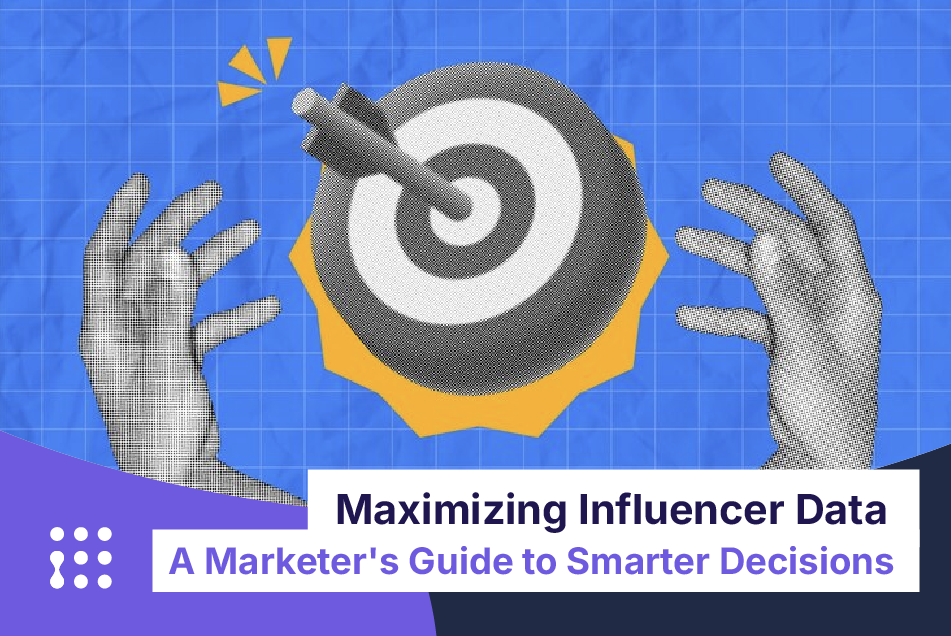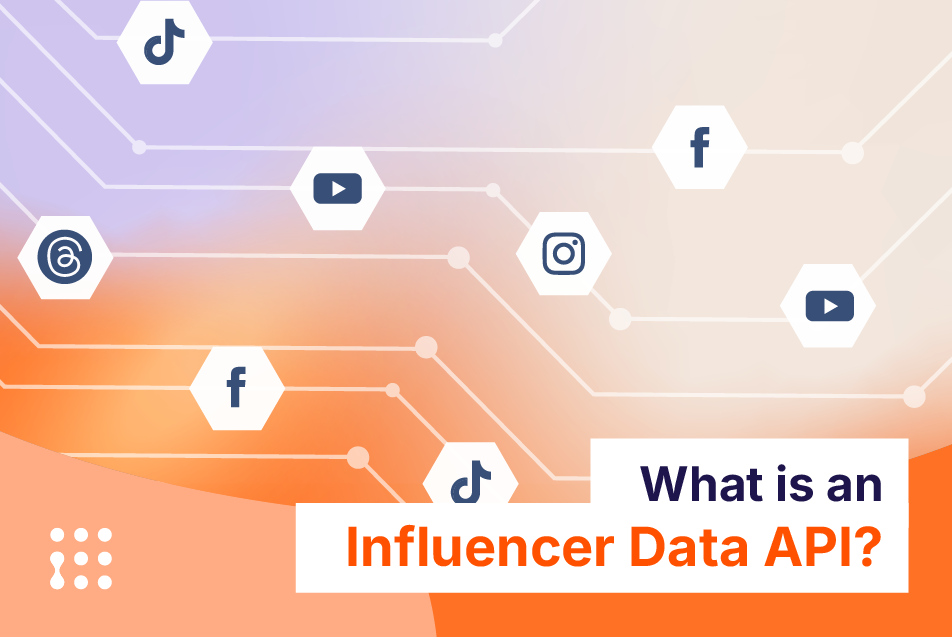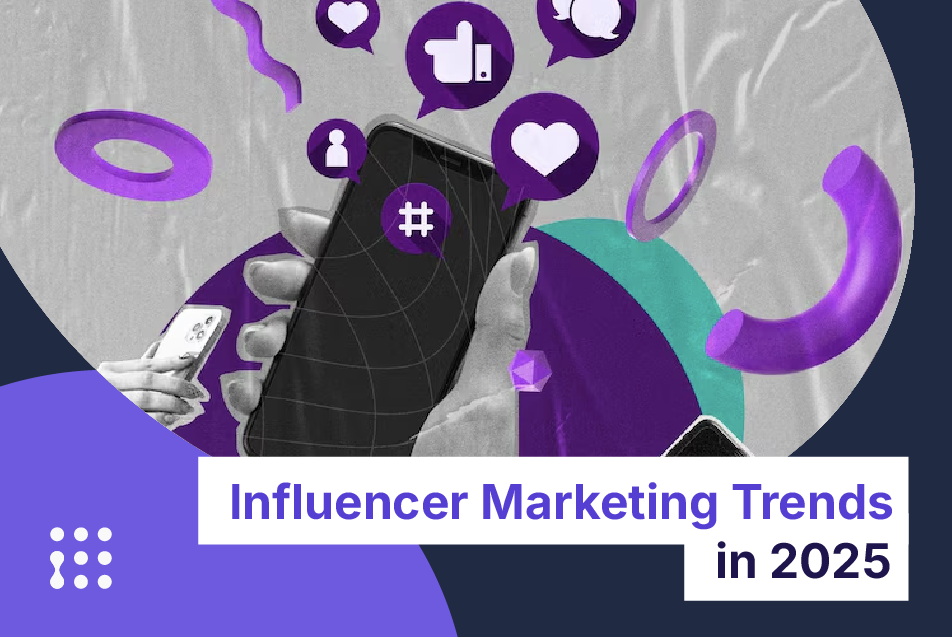Influencer marketing has become an increasingly popular strategy for businesses looking to reach new audiences and increase brand awareness. But for many, it still is a black and nebulous box in which they don’t see any advantage.
At its core influencer marketing can be seen as an offshoot of celebrity endorsement. Like the former, it piggybacks off the popularity and social proof of public figures by associating a product with them and therefore making it desirable to the audience.
Contrary to celebrity endorsement, influencer marketing does not have to rely on widely known personalities to be effective but can target niche communities to activate very specific audiences.
What can influencers do for you?
So if it relies on little-known people how can it be effective?
Well, in the current social media landscape hundreds of thousands if not millions of people have turned themselves into content creators. Content creators, also called influencers, use their online platform to talk about what they enjoy: movies, books, sports, or even 15th-century typography
Thanks to the wide reach of social media platforms creators can reach similarly-minded people and build communities around their persona and passions.
In turn, companies can partner with influencers relevant to their product and have access to a highly relevant audience thanks to them.
These kinds of partnerships allow companies to focus their marketing efforts on only relevant prospects and deliver out-of-the-ordinary ROI without the need to rely on external data or guessing keywords.
What makes influencers different?
Influencers are like snowflakes: no two are the same. As we saw above they cover many different topics and that’s one of the most evident differences between creators.
But, not the only one: different platforms lend themselves to different types of content: Instagram and TikTok promote short-form video content, LinkedIn and Facebook also integrate written content and YouTube is amazing for long-form videos.
Different content formats attract slightly different audiences even if the topic of the content is the same.
The following size is arguably the most hyped metric when it comes to influencers. And that’s for a reason: is easy to look at and makes a case for large influencers to be highly valuable for a marketing push since they can bring your product in front of a very large audience.
It is also important to realize that audiences interface very differently between small influencers and large ones: followers develop a parasocial relationship with the influencers they follow. This means that they start to consider such influencers almost at the same level as close friends, even if they never interacted 1 to 1. These relationships are generally stronger with smaller creators since the interactions are felt more authentic and genuine than with larger influencers.
Reach VS Relevancy
Of course, partnering with smaller influencers also means that fewer people are going to see your message.
Once a content category that is relevant to your product is identified the next step is to do a balancing work between reach, provided by large accounts, and relevancy, provided by smaller accounts. This is a spectrum with most influencers finding themselves somewhere in the middle, therefore many of them provide a good deal.
But certain campaigns are more focused on brand recognition or awareness and they will skew their influencer selection towards a more ample reach. While those marketers who are looking to boost sales are going to prefer smaller creators who are more deeply connected with their audience.
Why is it important to have good-fitting influencers
As we have seen not all influencers are the same. In a sea as vast as social media finding the right ones for your company can be a daunting task.
Concurrently enrolling influencers that fit your company image is one of the most important parts of an influencer marketing campaign.
So how can you make sure to find and enroll the right influencers? It’s all a matter of influencer discovery.
But before that, we need to have a clear understanding of what makes an influencer a good fit.
What makes good-fitting influencers
Influencers can cover different topics, have vastly different following sizes, and use different content formats. But how does this translate to fitting or not a company image?
First to consider is the topic the influencer covers: certain companies and products can draw a direct line to specific content niches.
For example, a car accessories brand will find good fits by contacting creators who created content about cars and car customization.
But other products may not have such direct connections: mobile games and online services often cater to a vast audience not enclosed in a content category.
For these cases is important to think about use cases and how they can relate to different content niches.
In our experience, Notion is a great example: their software can be used in an infinite number of ways for an infinite number of purposes.
To highlight it they didn’t provide a unified ad copy but they required creators to come up with their way of using the software to introduce it to their audience and make it more relatable to their needs.
As we saw different following sizes can lead to a different relationship with the audience, that is one factor that is going to have a profound impact on a campaign’s effectiveness.
Campaigns that aim to bring a brand name to a large audience but don’t care about immediate conversions will prefer to partner with large influencers in their niche. Other the other hand, when conversions are the main focus, smaller creators are better suited.
Each creator also has its tone and way of presenting themselves that needs to be taken into consideration and assessed if fits the brand image.
How to evaluate influencer performances for any content verticals
While the following size is the most flashy indicator of how successful a content creator is, it’s not the only one.
Growth rate, engagement rate, and community sentiment are even more important to take into consideration before signing a collaboration.
In the end, you don’t want to risk handing money to someone who bought a lot of fake followers but has no actual viewers.
Growth and engagement rates can be calculated manually and the sentiment can be gauged by looking at the comment section.
But when it comes to doing it for tens or hundreds of different profiles is a very time-consuming process.
This is where software like CreatorDB comes in handy: we provide all the above-mentioned metrics in one place making it easy to filter for the desired qualities and compare different influencers on their performances.
You can head over to our SaaS and start a free trial to practice and see how simple is going to be.
Simplify your evaluation process with CreatorDB
Analyzing influencer metrics is crucial to finding the right influencer for your brand collaboration. It’s essential to look beyond the number of followers an influencer has and consider other key metrics that can help you determine the influencer’s value to your brand.
Learn everything you need to know about all the metrics that matter in our Analytics 101.
One important metric to consider is the engagement rate. An influencer’s engagement rate indicates how active their followers are and how likely they are to engage with your brand.
Look for influencers with high engagement rates, as they are more likely to drive engagement and conversions for your brand.
Another key metric to consider is audience demographics. It’s crucial to ensure that an influencer’s followers match your target audience, as this will increase the likelihood of them being interested in your product or service.
Look for influencers whose followers align with your target audience regarding age, gender, location, and interests.
Finally, consider the influencer’s overall brand fit and whether their values and messaging align with your brand. By reviewing their content, previous collaborations, and general online presence, you can evaluate how good of a fit they are.
By using CreatorDB you can easily find each creator’s metrics and compare them in the blink of an eye. CreatorDB’s profiles are structured to give you all you need:
First, you will see the creator’s overview with information about the content creator’s YouTube channel.

Along with this first introduction, you can find an overview of the main analytics for the content creator and other social media.

Further down, you can see an overview of the creator, especially focused on followers and their growth.
The CreatrDB score lets you easily understand how valuable a creator can be for your campaign.

Further down you can find a breakdown of the content the creator has published recently and the time that it usually is posted at.

You can go into details for each social media platform.

How to find influencers for free
Now you know what makes influencers different, and how these differences can help your campaign achieve its goals. It’s time to go over the most important part: finding influencers that fit your criteria.
Social media platforms offer search functions that can be leveraged to find influencers for free. All you need is just create an account and a lot of patience.
Since each platform is different there are advantages and disadvantages to using each native tool. In the next section, we will go over how to get the best results out of Instagram, YouTube, and TikTok search capabilities.
Influencer discovery on Instagram (2 Ways)
1st way, native search
One of the best ways to discover profiles on Instagram is to go to the search tab and type in a hashtag related to the type of content you are interested in.
We recommend using the mobile app otherwise Instagram will limit your results to 28.
Then you can manually check each post and the profile who posted it, write down the handle following count, and other relevant information.
Create a spreadsheet with all this data and use it to evaluate each profile to find the best fitting for you.
2nd way, Google search
If you don’t want to use the mobile client, your best option is to leverage Google search to find content posted on Instagram.
By starting your search with the operator “site:instagram.com” you are going to limit the results to only pages coming from Instagram. You can follow it with hashtags related to your topic of interest and then manually note down the profiles and the information relevant to your campaign to find good-fitting influencers.
Influencer discovery on YouTube
Even if is not evident, YouTube uses hashtags and allows users to search content by them. So to find content creators relevant to your campaign you can head over to the search tab on YouTube and type in any relevant hashtag to obtain a list of videos that include the hashtags in their description.
Once again, you can manually take notes of the channels and the important information about them to more easily compare and evaluate them.
N.B. YouTube is heavily pushing Shorts and they will be heavily featured in every search.
Influencer discovery on TikTok
Unlike the previous services, TikTok does not offer a search based on hashtags. Clicking on a hashtag will lead you to a page showing all content tagged with that hashtag, but searching for a hashtag will not and results that have the term only in the caption or that the system considers relevant will still be present in your results.
You can get rid of this problem by finding one reel featuring your desired hashtag and clicking on it.
Once you see content relevant to your campaign, you can start taking notes about the creators and their analytics to evaluate their performances and discover the best-fitting ones.
Discover influencers on other platforms
Researching niche platforms and organic communities is another effective way to find influencers for your brand. Niche platforms and communities focus on specific interests, hobbies, or topics. These communities can be valuable for finding influencers with a dedicated following within a particular niche.
For example, if you’re looking for influencers in the fitness industry, research fitness communities outside social media like BodyBuilding.com. These communities have members passionate about fitness and follow influencers who share their interests.
Within these communities, you can find users that have grown their reputation over the years and may be happy to sponsor your products.
While not influencers in the strict sense of the word, prominent forum members are, to some extent, the grandfathers of modern influencers and can help your marketing campaign, especially if you are targeting a more insular and less mainstream community.

Find Your
Perfect Influencer
Match Instantly
Best tools for influencer discovery
As we just saw there are free ways to perform influencer discovery effectively and collect all the information relevant to plan which influencer to enroll in a campaign but they can be very time-consuming.
In this case, many companies have opted for influencer discovery tools to make easier the whole process and save an incredible amount of time.
Find the most fitting influencers with CreatorDB (tutorial)
Once you have your account open the app and click on Discover:

On the top of the screen, you will find the search console with all the filters you can apply.

Our database covers YouTube, Instagram, and TikTok.
Let’s say we need to find YouTube channels that talk about baking, in the United States, and have more than 10.000 subscribers.
Select the YouTube tab and then select the corresponding filters.

Then hit search, and you will have a list of all the YouTube channels fitting the criteria.

But how this is going the help us compare them? By clicking the Edit column and selecting the metrics you want to compare.
Doing so is going to allow us to decide which to include and sort the list by those metrics making it easier to highlight the creators that fit our search.
Hovering over the profile picture will allow you to add the creator to a list and keep track of who is promising for your campaign.

How to get in contact with influencers with CreatorDB
Once you identified the content creators you are interested in, it can be complicated to get in contact with them: their DMs can be already flooded and they can not easily figure out their email address. On CreatorDB, we provide contact information for many of the influencers listed in our database.
Once you established the creators you want to contact, open their profile and look just under the introduction on the left, you can find a button to view the creator’s email.
N.B. not all creators have an available email address.

When pitching the partnership, grab their attention and clarify that you know who they are and value their work. Personalized emails are highly recommended. Introduce your product and make clear why they are a good fit for it.
Contextualize it in the campaign they will be part of.
If you want to improve your game when contacting influencers, read our 5-step guide.

Find Your
Perfect Influencer
Match Instantly
The mistakes to avoid when you are looking for influencers
1. Solely focus on the number of followers
When searching for influencers, one common mistake is solely focusing on the influencer’s number of followers. While it may seem like a high follower count equates to a high level of influence, this isn’t always the case.
It’s important to remember that, tactics such as buying followers or growing followers’ numbers with bots, and are cheaper than growing other metrics calculated over time.
Instead of solely focusing on follower count, it’s important to consider other metrics more indicative of an influencer’s value to your brand. Engagement rate, for example, is a more accurate measure of an influencer’s ability to drive engagement and conversions.
An influencer with a smaller but highly engaged audience may be more valuable to your brand than an influencer with a large but disengaged audience.
Additionally, it’s essential to consider the influencer’s overall brand fit and whether their values and messaging align with your brand.
Focusing solely on follower count can lead to collaborations with influencers who may not be the best fit for your brand, resulting in a disconnect between your brand and the influencer’s audience.
By considering a range of metrics and evaluating the influencer’s overall brand fit, you can ensure that your collaborations are more effective and meaningful for both your brand and the influencer.
2. Ignore engagement rates
When evaluating an influencer, it’s important to consider their engagement rate. Engagement rate refers to the percentage of an influencer’s followers actively engaging with their content through likes, comments, shares, and other interactions.
High engagement rates indicate an influencer’s ability to connect with and influence their audience. Low engagement rates indicate that an influencer’s audience is disengaged or not highly interested in their content.
Engagement rates are a more accurate measure of an influencer’s value to your brand when compared to follower count. An influencer with a smaller but highly engaged following may be more valuable to your brand than an influencer with a large but disengaged following. High engagement rates can lead to increased visibility for your brand, as well as higher levels of engagement and conversions.
It’s essential to keep in mind that engagement rates can vary widely depending on the influencer’s niche, industry, and audience demographics.
For example, an influencer with a highly engaged audience of niche enthusiasts may have a lower overall engagement rate than an influencer with a larger but less engaged audience in a more general niche.
By analyzing engagement rates alongside other metrics, such as audience demographics and brand fit, you can ensure that you find the right influencer for your brand’s specific needs and goals.
3. Forget about authenticity
Authenticity is a crucial factor to consider when evaluating potential influencers for your brand. Consumers are becoming more and more savvy regarding influencer marketing and can quickly spot when an influencer’s content is inauthentic or insincere. By working with authentic influencers who genuinely believe in and support your brand, you can create a more genuine and meaningful connection with your target audience.
One way to spot authentic influencers is to look for those who align with your brand values and mission.
For example, suppose your brand is committed to sustainability and environmentalism. Working with influencers who share those values can help reinforce your brand’s message and create a more authentic connection with your audience. In addition to sharing your values, look for influencers who have a genuine interest in and affinity for your brand and products.
Another way to ensure authenticity is to watch out for fake influencers.
Unfortunately, influencer marketing has also led to fake influencers who use fake followers, likes, and comments to appear more influential than they actually are. To avoid being duped by counterfeit influencers, look for red flags such as sudden spikes in followers or engagement, a lack of engagement from their followers, or a mismatch between their engagement and follower count.
By prioritizing authenticity in your search for influencers, you can create a more genuine and effective influencer marketing campaign that resonates with your target audience.





